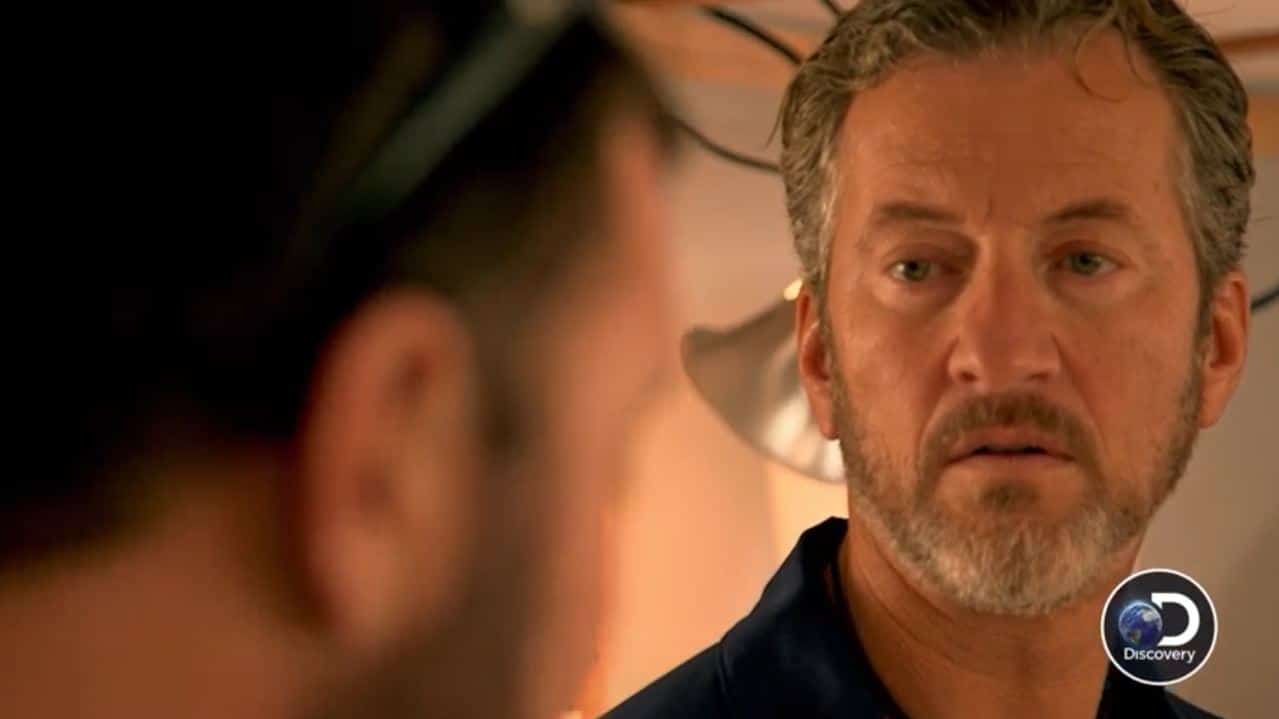
Cooper’s Treasure Season 2 continues tonight as the docu-series focuses on treasure hunter Darrell Miklos and the hunt to recover any or all of the wrecks believed to be charted on the precious maps astronaut Gordon Cooper bequeathed him.
The mission, along with finding eleven ships believed to hold vast amounts of treasure, is to honor and continue the hard work of Cooper, who while traveling in Earth’s orbit drew detailed maps of the vessels’ possible locations, called “anomalies”.
Tonight, marine archaeologist James “Jim” Sinclair explains to the core crew what they are up against in how vessels scatter under water after a collision or downing from being swamped by water.
In our exclusive clip, recovery expert Eric Schmidt says: “We’re not finding material that would suggest that the ship fell all down in one spot. It’s looking like it just kind of dropped some material and kept on.”
Listening to his crew, Darrell Miklos is trying to sort their recovery site, and asks: “So the question is, guys, what kind of wreck is this?

Sinclair answers Darrell and explains to the men that there are three main kinds of wrecks that occur, and describes how they lose their payloads and scatter under the water.
He says: “It has been, I think, most of our experience is that there’s a number of different sorts of wrecks. Three in general.”

He explains that the first one is an intact or coherent wreck site.
Sinclair says: “That is a ship that just takes on so much water it sinks. Those wrecks tend to stay pretty much intact. There’ll be a lot of loss of material, but they’ll all be in one place.”

“The other one we’ll call an impact wreck with limited scatter.”
Sinclair describes that one “comes in and maybe plows into a sandbar or a reef line and it’ll just stop dead in its tracks.”

The last and third type of wreckage Sinclair schools the crew on is called a fractured and highly scattered multiple wreck.
He says of this vexing wreckage: “Multiple pieces [will be] breaking off of one area dropping bits and pieces over maybe multiple lines of scatter.”
Describing a previous wreckage he worked on, Jim says: “We worked on one down in Panama of the San Jose which went down in the year 1631 the top of it ended up going 41 miles in another direction. So we still have to look around quite a bit.”
Absorbing all this wreckage intel, Darrell enthuses about the period-authentic barrel hoops find, and he says: “We’ve still got to look around quite a bit we don’t have enough information just yet to figure out exactly what type of shipwreck we’re on but the barrel hoops are fantastic fine so we’re gonna continue to search the immediate area [and] hopefully we can find more related artifacts on the line that we’ve already established.”
With so much physical evidence mounting up, it looks like the discoveries of authentic artifacts on Cooper’s Treasure Season 2 will become even more breathtaking and interesting as the season finale will surely yield something of note, we hope.
What will they find? Tune in!
Cooper’s Treasure airs Friday at 9 pm ET/PT on Discovery.